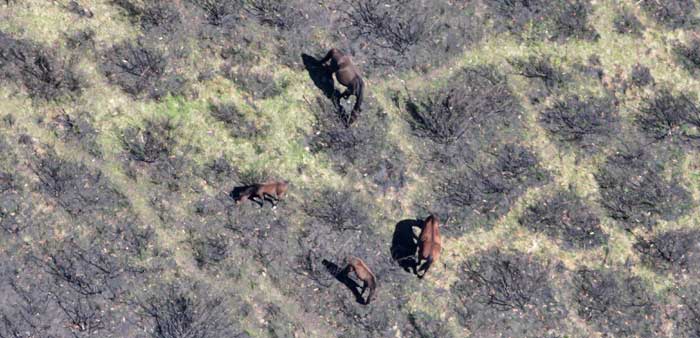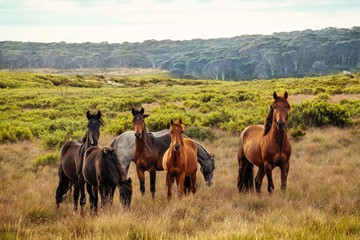Those opposed to action on Victoria’s feral horse problem are back in court today with a hearing in the Victorian Supreme Court, a last ditch effort to delay the inevitable.
“Feral horses in the Alpine National Park are out of control and Parks Victoria need to be allowed to get on with the job,” said Andrew Cox, Invasive Species Council CEO.
In an all-day hearing today in the Supreme Court, grazier Philip Maguire is trying to stop the planned removal of feral horses from the Alpine National Park. The action is based on claims of lack of public consultation about the planned removal of horses from the park.
“Parks Victoria have been patient in their attempts to reduce feral horses while numbers have continued to rise to unprecedented levels.
“Extensive public consultation occurred over many years with the development of the current 2018 horse plan. The plan was to remove the horse population on the Bogong High Plains and 400 horses a year from the eastern Alps.
“Parks Victoria agreed to limit horse removal during Federal Court proceedings brought by the Australian Brumby Alliance, which dragged on for eighteen months. Valuable time was lost and horse numbers increased.”
The latest Alps horse count in 2019 found that numbers had doubled since 2014.
Since the court ruling in their favour on 8 May, Parks Victoria sought to reinstate their horse removal program by using trapping and, in some high conservation value areas, ground shooting. Now opponents are trying a new legal angle.
“It is becoming more urgent to solve Victoria’s growing horse problem,” said Mr Cox.
“The horses are tramping the alpine bogs, destroying the habitat of threatened plants and animals such as the broad-toothed rat and alpine she-oak lizard. Feral horses are damaging Indigenous sites. The park is recovering from devastating bushfires.
“It is ironic that those seeking to protect the horses today are claiming to represent the traditions of people that chased, rounded up, trapped and killed hundreds of horses
“The brumby was despised by the mountain graziers who took the cattle and sheep into the high country. Even the word brumby derives from the word ‘brummy’ or shoddy or cheap. Brumbies were horses of inferior quality and ate the grazier’s valuable pasture.”
“As Banjo Patterson wrote, ‘if they didn’t get rid of the horses the horses would get rid of them.’ “









